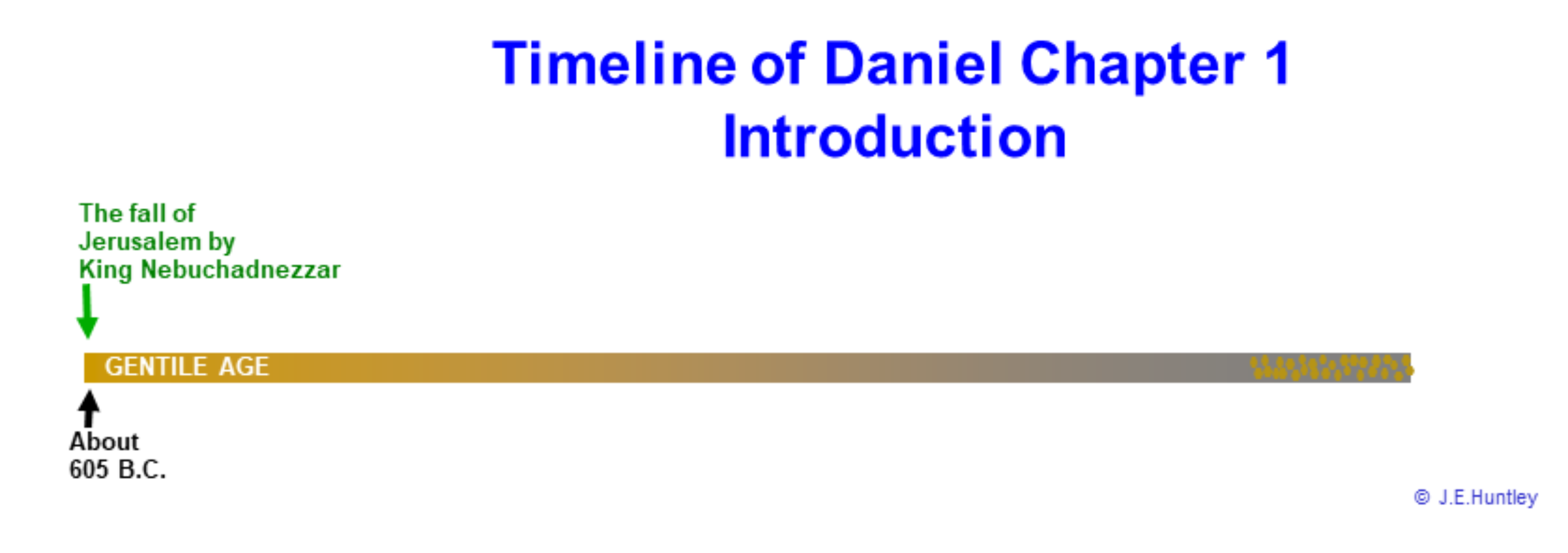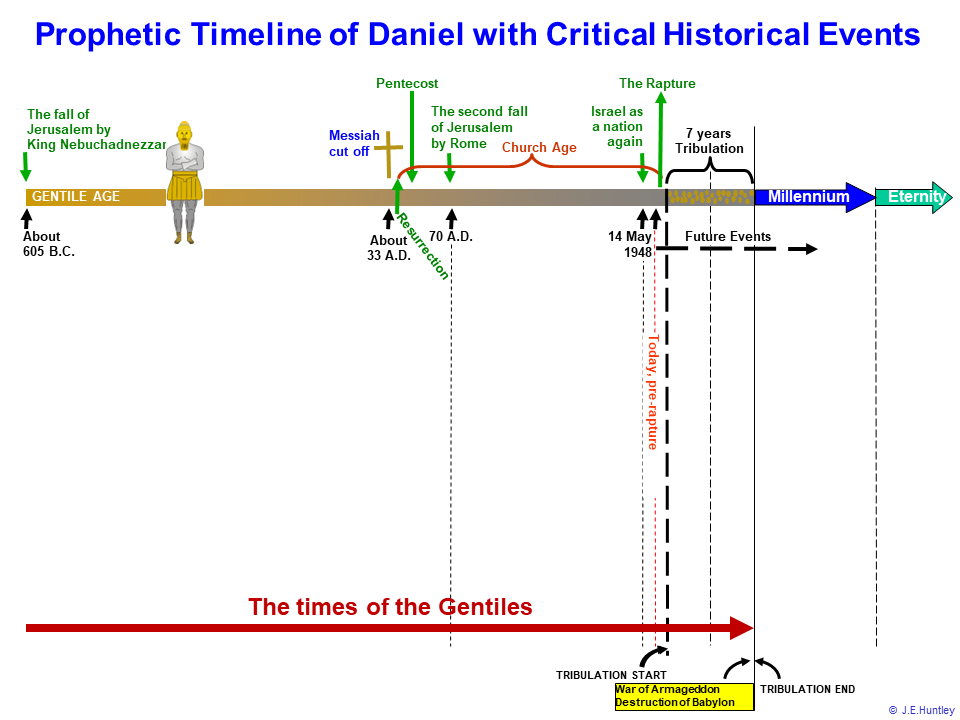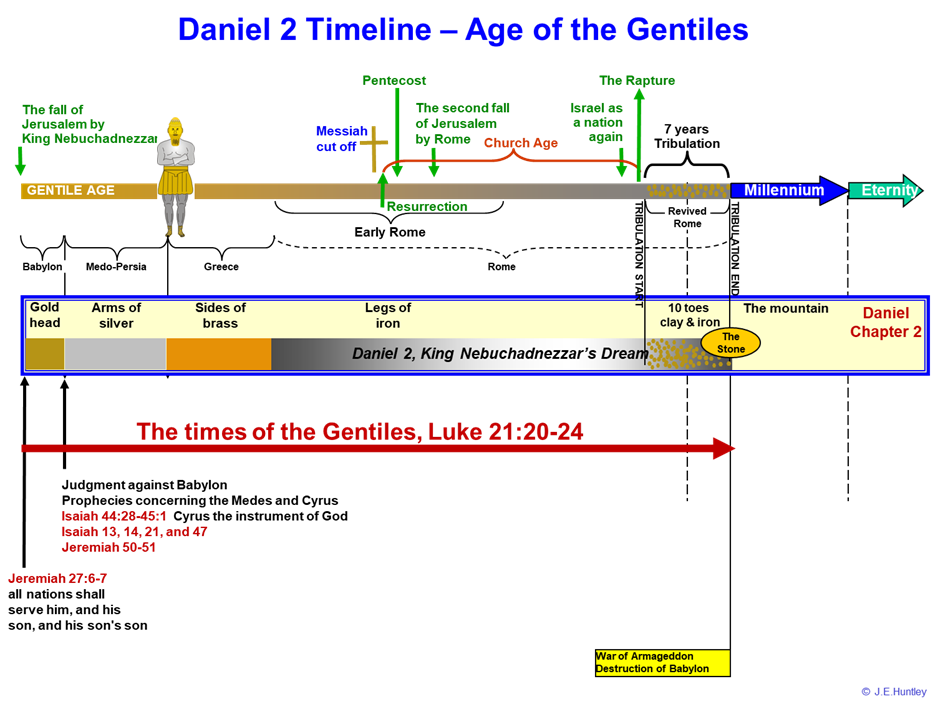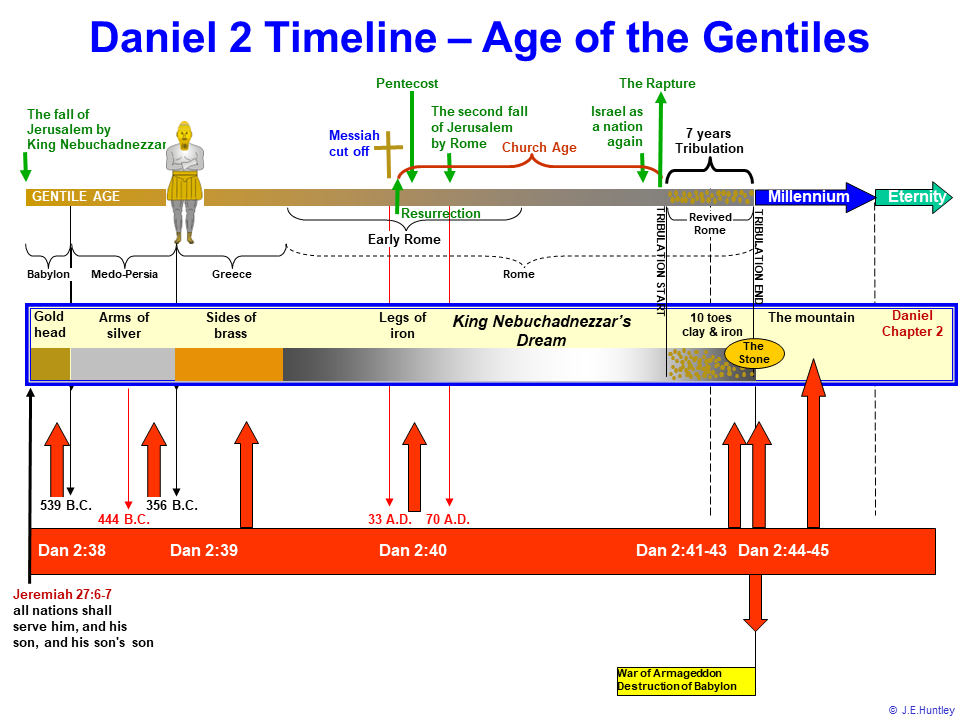Daniel: Chapter 2 Timeline
The following is a base timeline for Daniel 2:1-49. This is used to construce timelines for this chapter of Daniel and all the following chapters. More information on the timelines used for the book of Daniel is described at Daniel chapter 1.

That webpage also expanded on the base timeline to illustrate the age of the Gentiles, as shown below.

This timeline with critical historical days as shown above, is also described in the interpretations section, under the timeline link.
Shown next are a combination of timelines, varied first by removing the critical dates, then showing new ones that are relevant to the book of Daniel. The timeline below has been segmented based on the Gentile eras as revealed in Daniel 2:1-49. There are four discreet nations referred to in King Nebuchadnezzar's image, the fourth being divided into two parts that are separated by time. Though the names of the nations associated with each metal are not given in this chapter, except for the head of gold, they are identified in later chapters in this book. What is shown below are the four nations: the head of gold (Babylon), arms of silver (Medes and Persians), sides of brass (Greece), and the legs of iron, (Rome), followed by the ten toes that is shown as a mixture of iron and clay (the revived Roman empire, which is a future event). Below the base timeline is a pale yellow box with a blue border. Inside that box are the different parts of the Gentile era defined by King Nebuchadnezzar’s dream. The Roman era is shown as a dark gray rectangle, that fades into white, since the Roman empire was never defeated as the previous empires of Babylon, Persian, and Greece were. The Roman empire is shown to become gray again, but with the nodules of brown to represent clay mixed with iron during the seven years of tribulation. As with the other empires there will be an abrupt end of the Roman empire and a complete end of Gentile rule or influence over Israel and its capital Jerusalem.
The Gentile rule will end with the physical, visible, and literal return of the Lord Jesus Christ, which is represented by the stone made without hands. The stone strikes the ten toes of the image which represents the ten kings who will reign with the Antichrist during the last half of the tribulation as seen in the description of this site on Revelation chapter 13, Revelation chapter 17, Revelation chapter 18, and Revelation chapter 19. The event of the stone striking the ten toes is the battle of Armageddon. Thereafter, is the establishment of the 1,000-year reign of the Lord Jesus Christ over the world. That event is represented by the mountain that forms from the stone crushing the image of the Gentile nations. The dates at the bottom of the dateline in black represent the end of one empire and the beginning of another. The dates in the red font, are significant dates when the walls and streets of Jerusalem were rebuilt, followed by the death, burial, and resurrection of the Lord, and in the destruction of Jerusalem by the Romans, followed by the world-wide dispersion of the Jews. The prophecy given by Jeremiah concerning the limited number of generations of King Nebuchadnezzar who would follow him before the fall of his kingdom is also given.

The last graphic has a simple overlay to aid in identifying key verses in Daniel 2 that relate to each segment shown on the following timeline.

